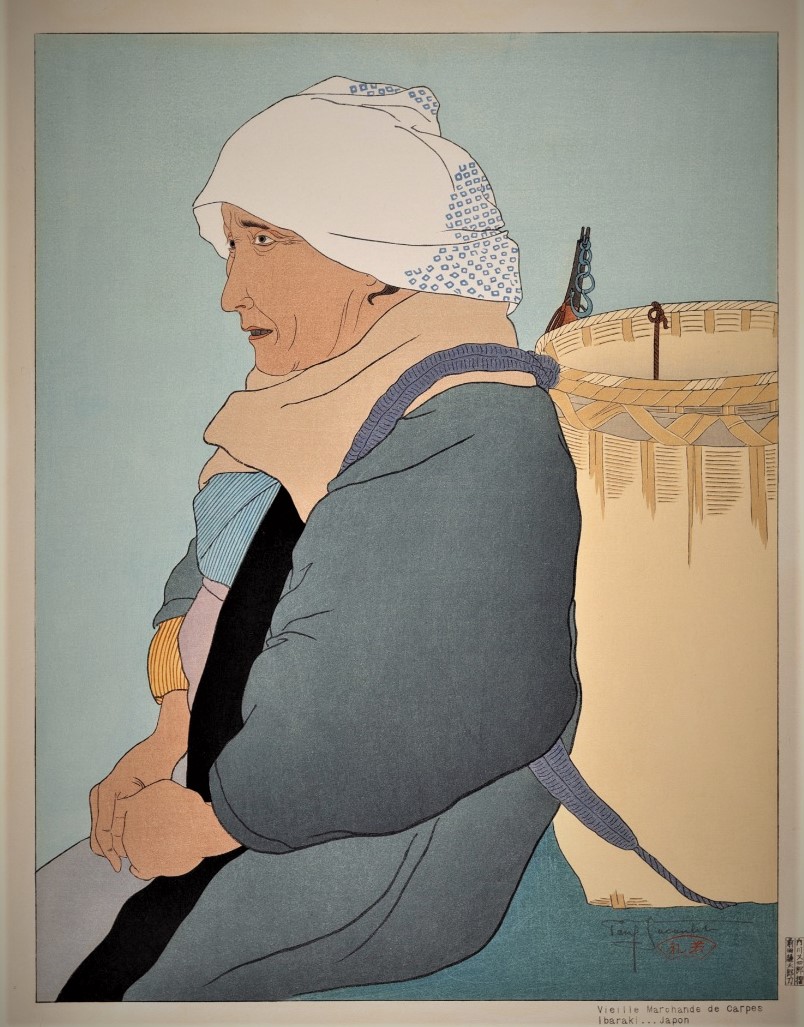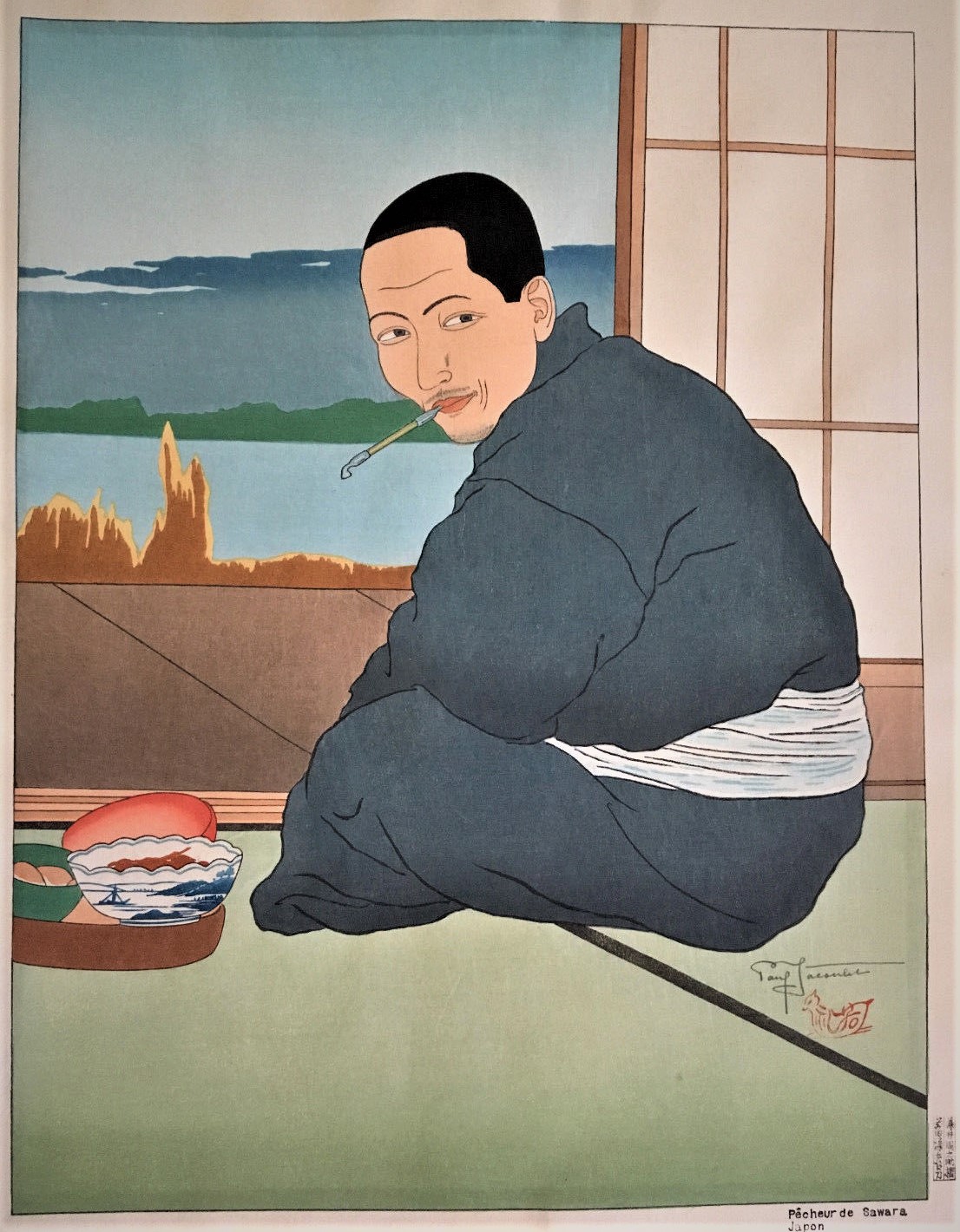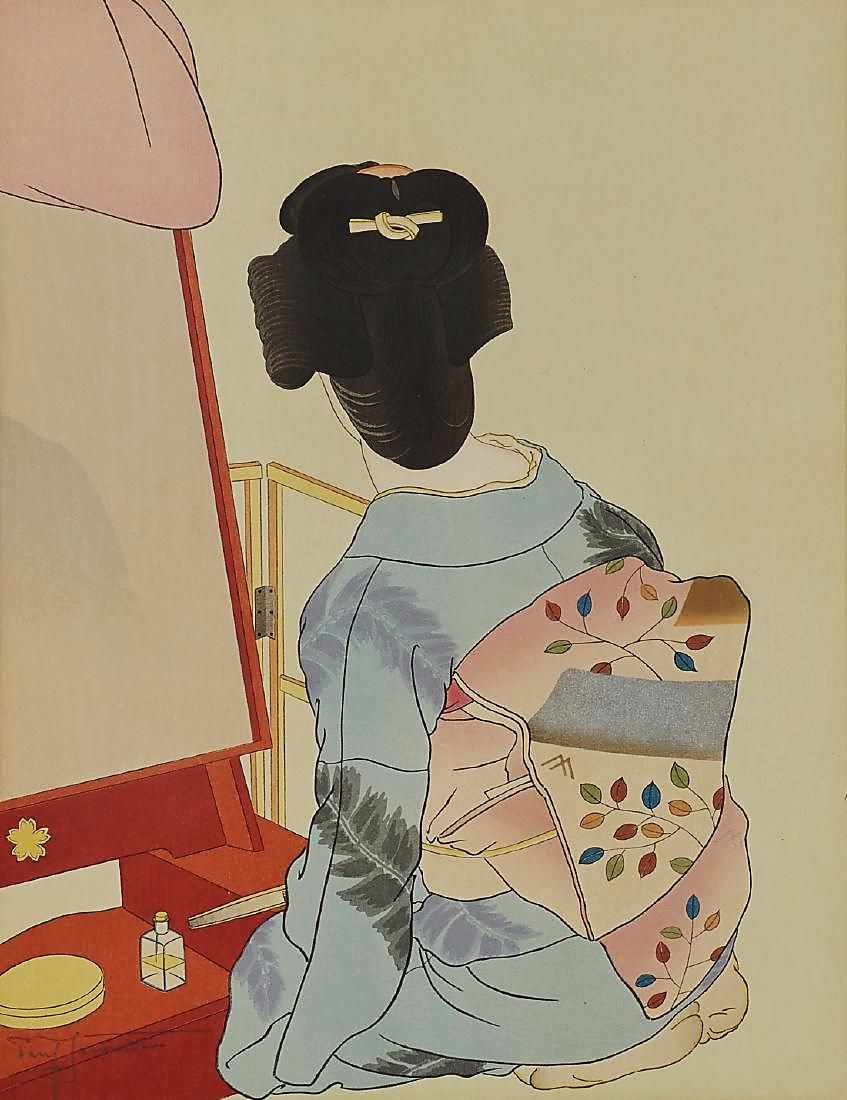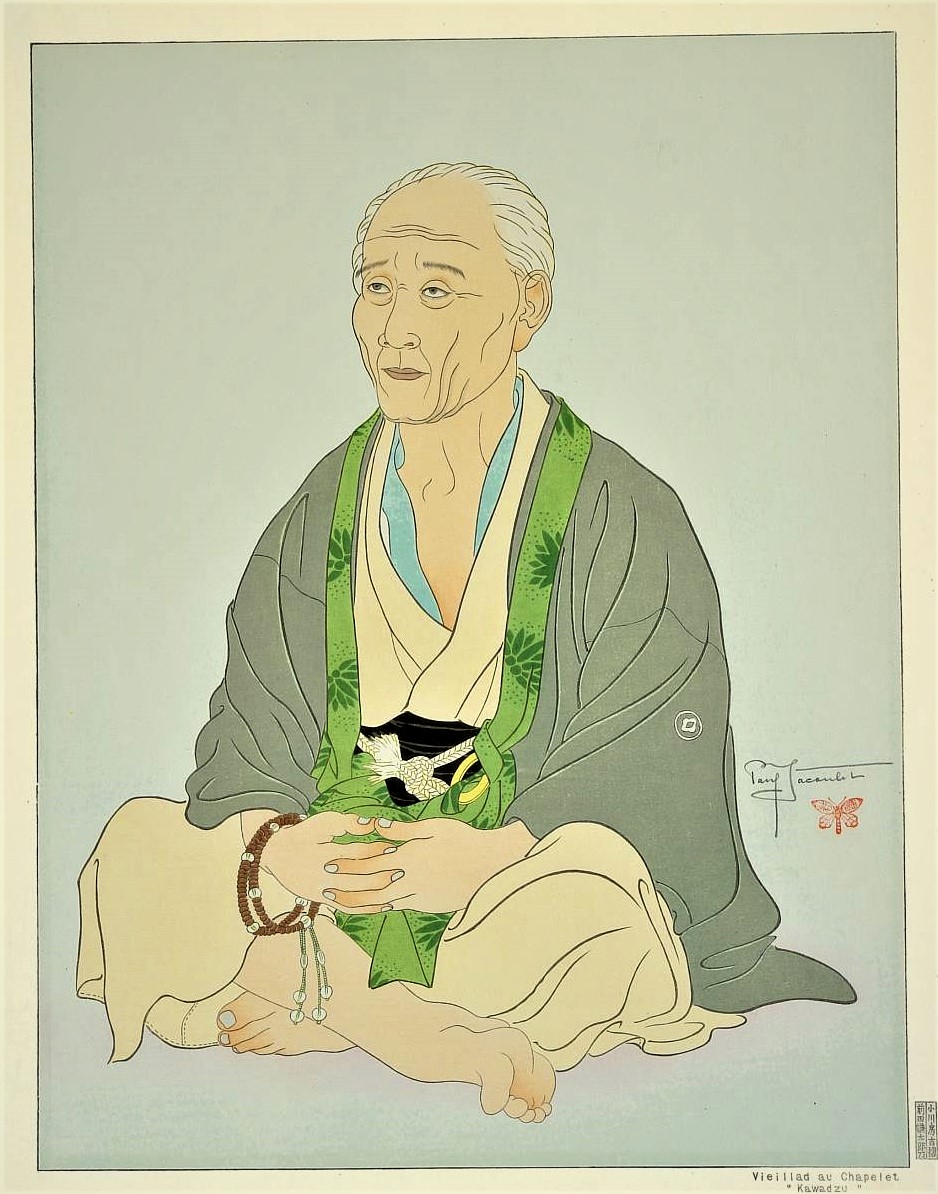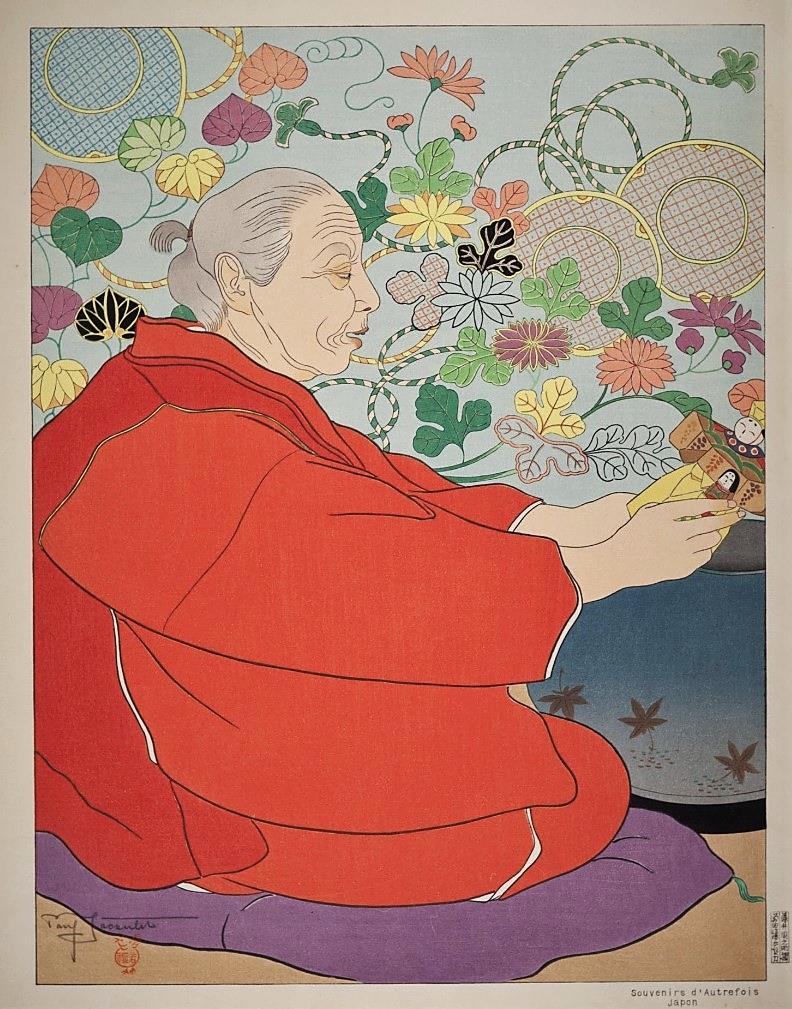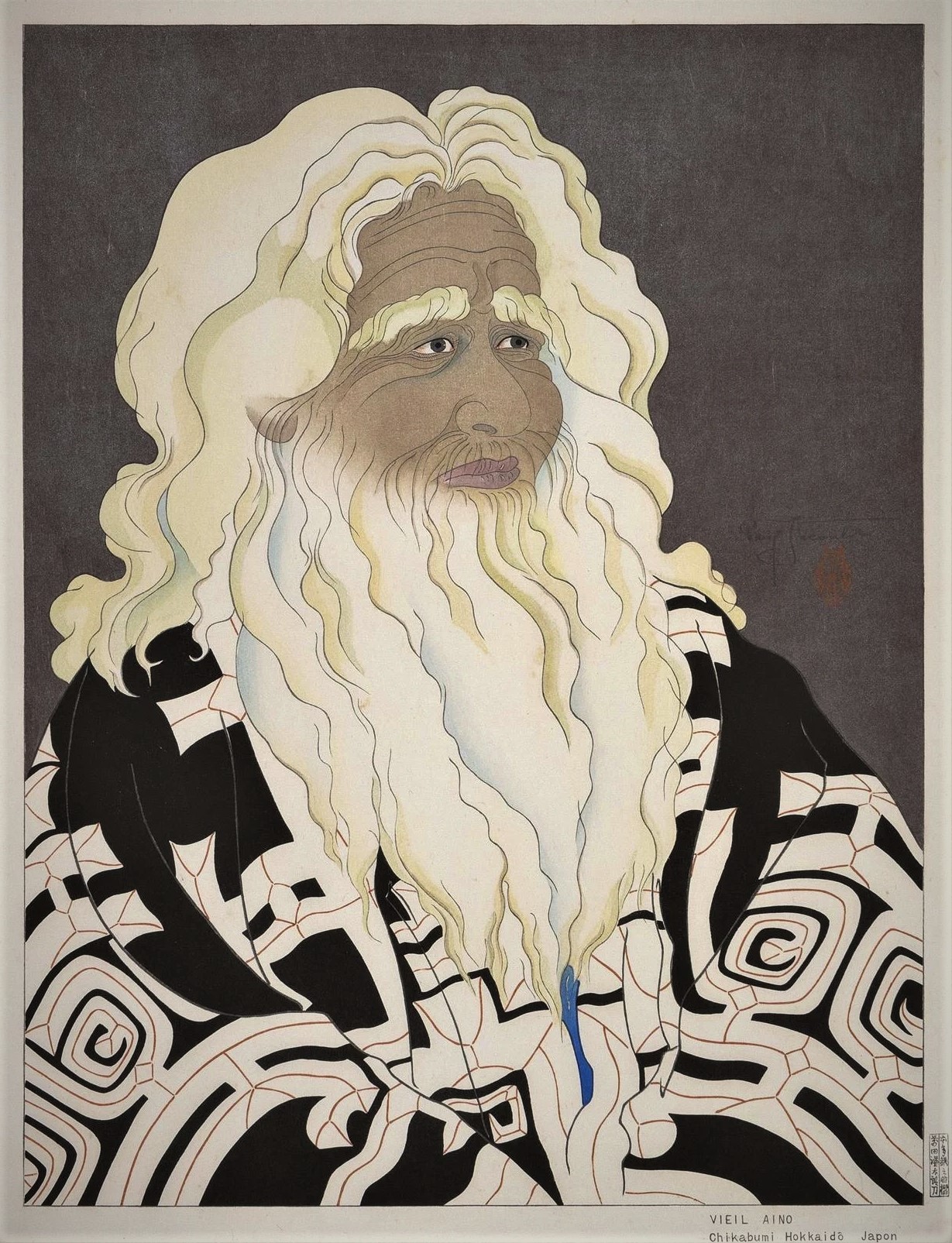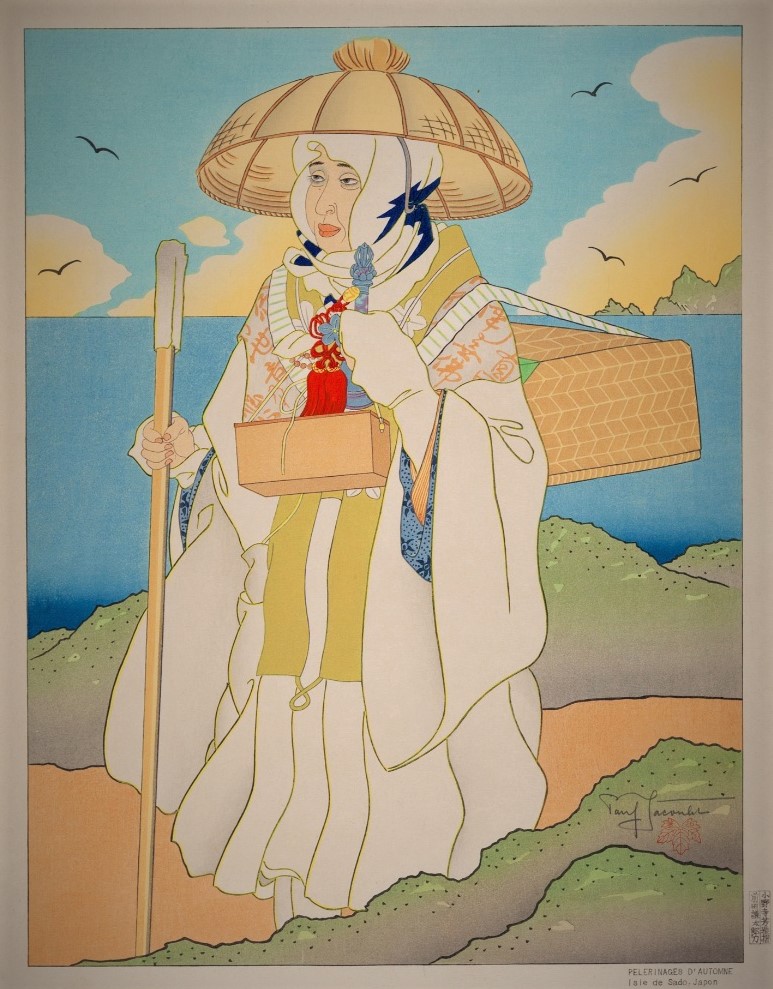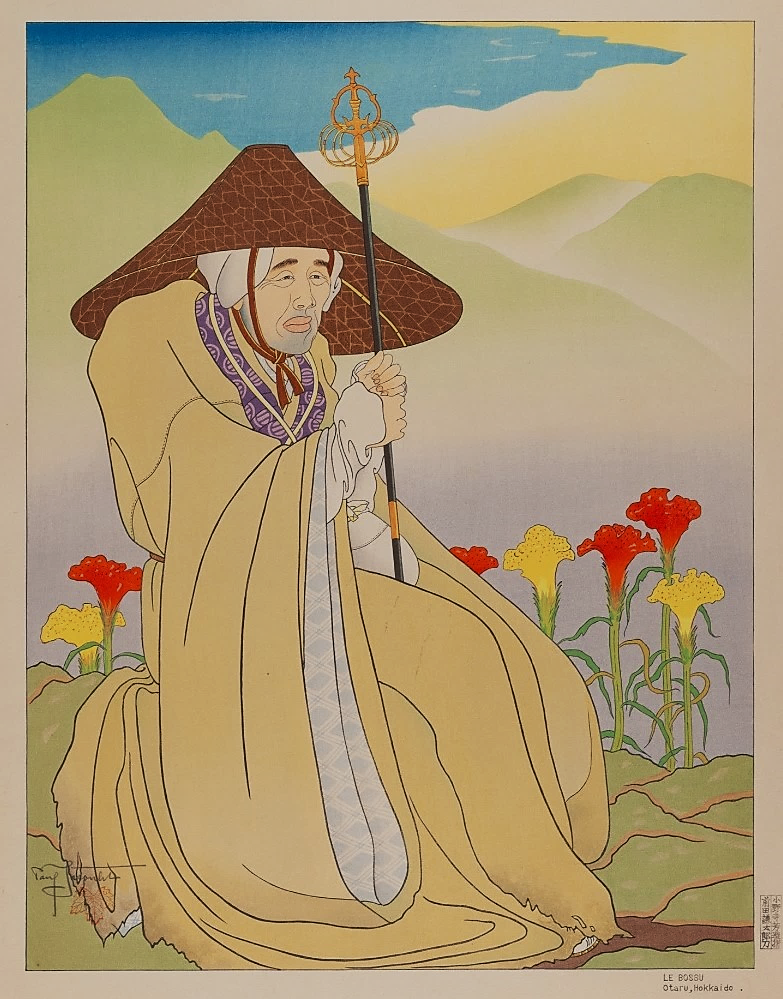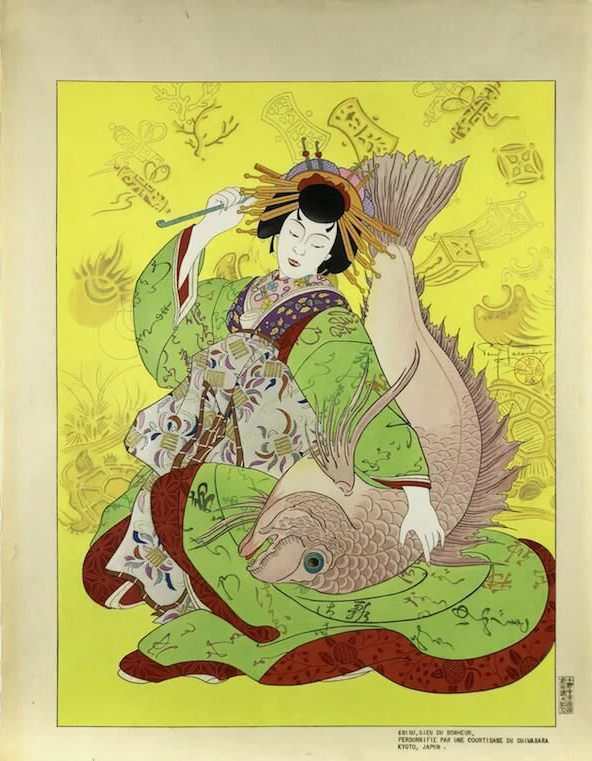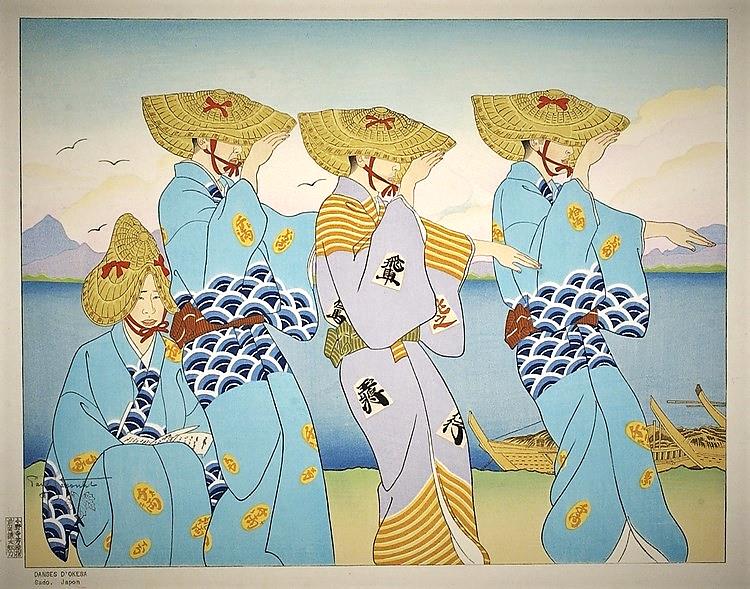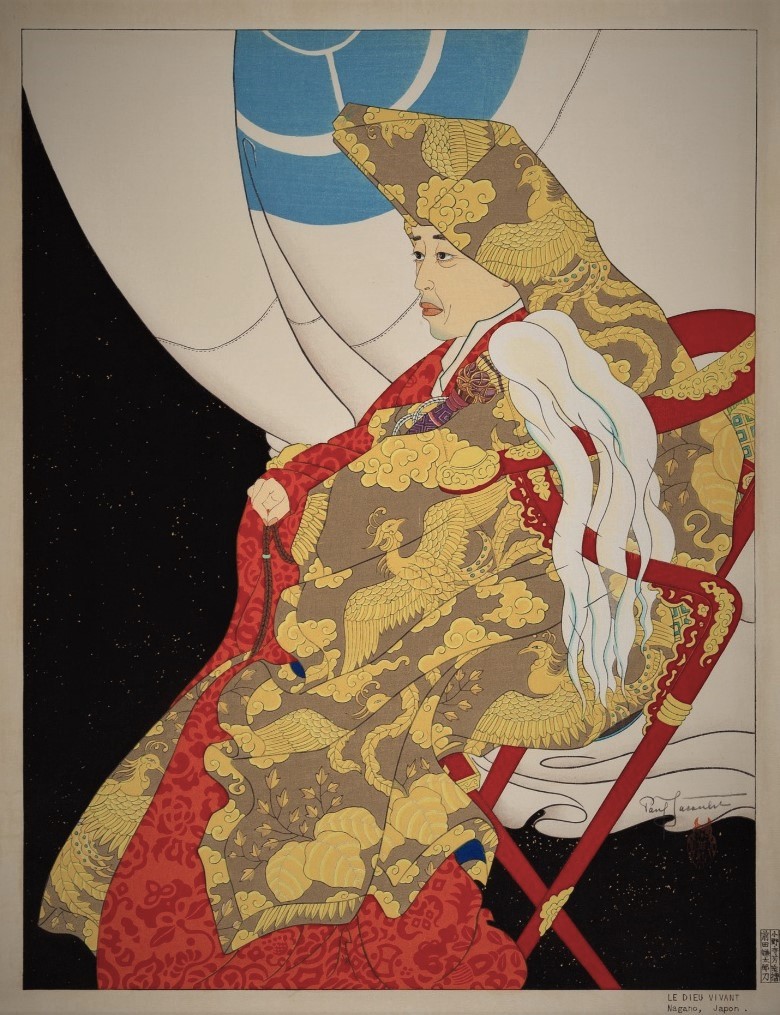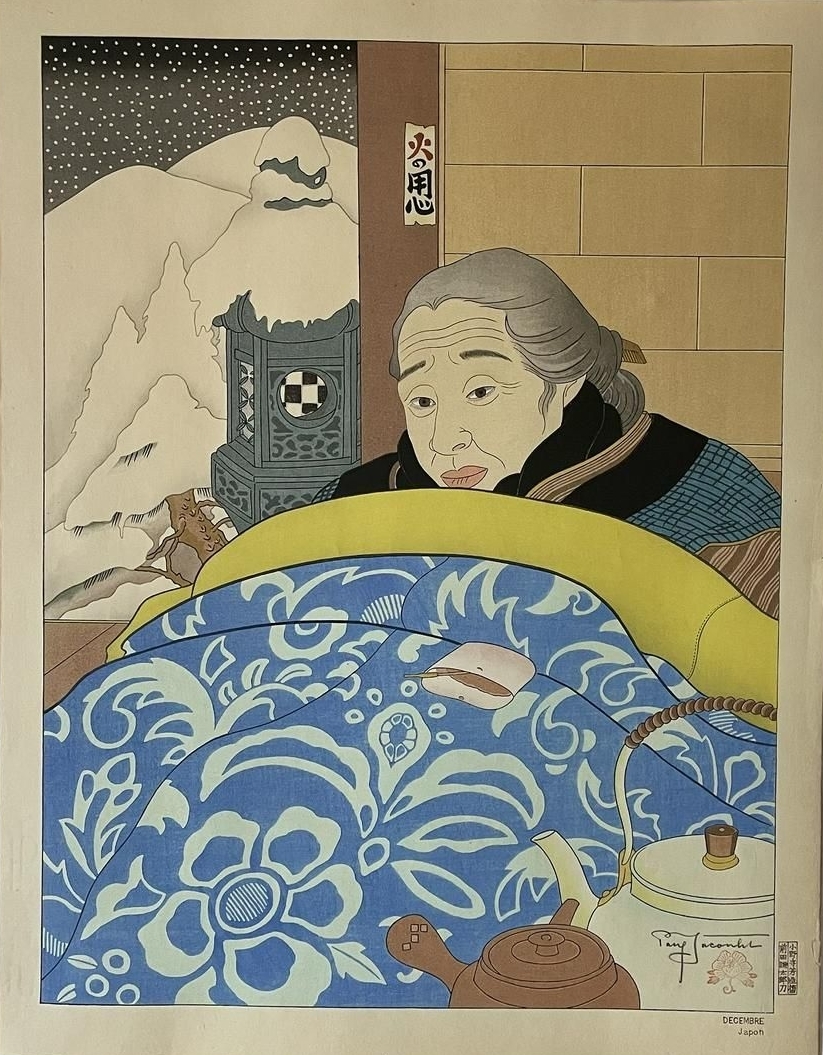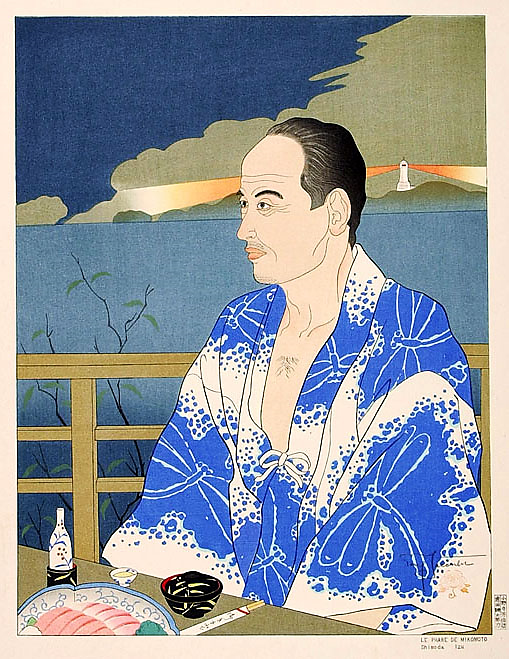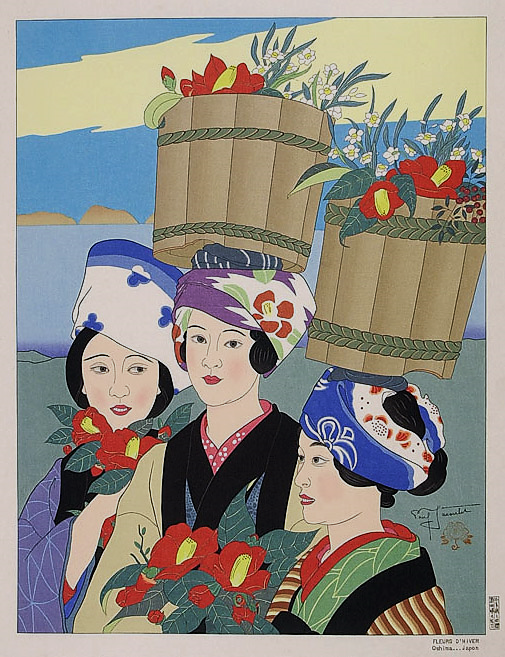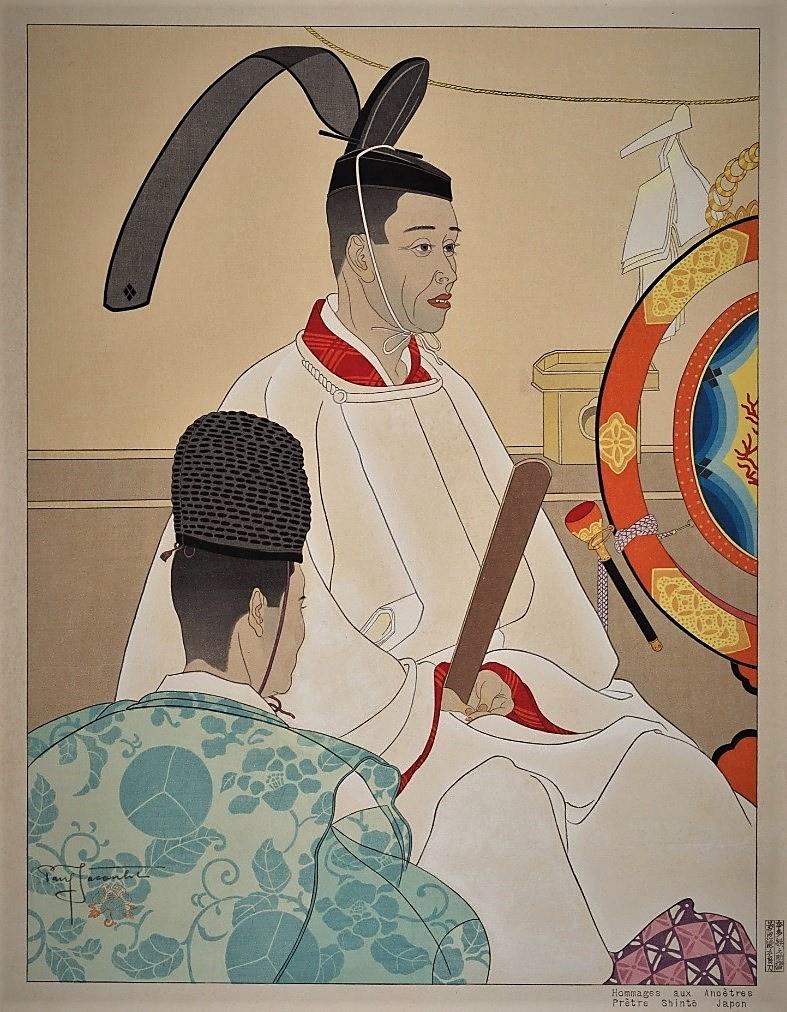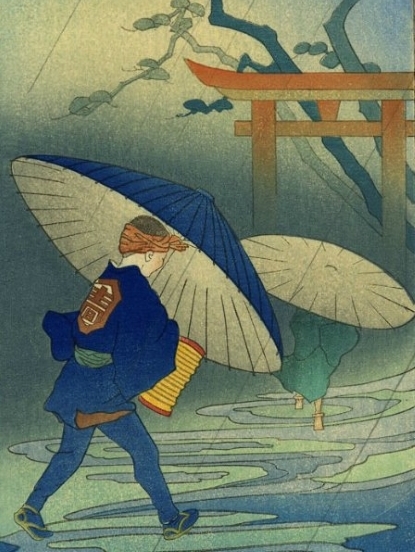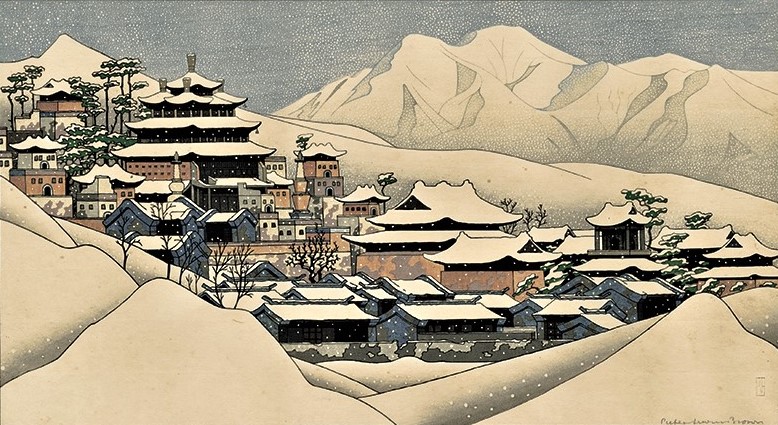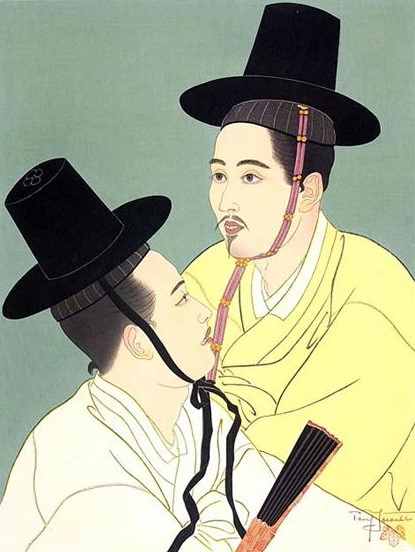PAUL JACOULET AND JAPAN
Arrived in Tokyo in 1899 at the age of three, Paul Jacoulet is undoubtedly the most "Japanese" French artist of the 20th century. He did all his schooling at the Japanese public school and, thanks to the relations of his parents, he benefited very young from lessons and advice from the best artists of the time : the painters Seiki Kuroda and Keiichirô Kume who, having returned from long stays in France, taught him the techniques of Western-style painting ; the writer Yone Noguchi, his American wife the journalist Léonie Gilmour (and their son Isamu Noguchi with whom Jacoulet befriended and who became a famous sculptor and designer) : with them he discovered the prints of Utamaro who exerted a determining influence on him ; he learnt also the calligraphy with a former Samurai ; finally, Ikeda Terukata and his wife Shôen, a couple of renowned artists with whom, from the age of 12, he practiced watercolours and wood engraving. This unique training allowed this young Frenchman to share the best aspects of classical Japanese culture and to gradually penetrated the narrow world of ukiyo-e, "the images of the floating world".
When his father died in 1921 as a result of gas poisoning on the Verdun front, and when his mother decided to return to France, Paul Jacoulet made the decisive choice to stay in Tokyo and henceforth linked his destiny to that of his country of adoption. Since its military victory over China (1895) and Russia (1905), Japan has become a growing empire that the Treaty of Versailles of 1919 further increased : Taiwan, Shandong, Korea, the islands of Micronesia passed under its control. In the 1930s, a series of aggressions and occupations in China followed, as preludes to the Second World War.
His youth, in the 1920s, is bohemian. A job as an interpreter at the French Embassy gives him free time to indulge his passions : drawing and watercolour ; the purchase of a large number of prints by the best Japanese masters ; an exceptional collection of butterflies ; but even more theater and traditional music. He spends his evenings in the midst of young Japanese who devote themselves like him to narrative theater (Gidayu-Joruri) and he accompanies them on the three-stringed lute (Shamisen) which he learned from childhood.
From 1929, the financial support of his remarried mother allowed him to enjoy all his freedom, to undertake many trips and to definitively choose painting as a means of expression and the men and women he met as subjects of his countless portraits. In particular, he found his inspiration in different regions of the Japanese archipelago : the Izu peninsula where, as a child, he spent his holidays (Le phare de Mikomoto, Fleurs d’hiver), and where his dear friend, the young Yujiro Iwasaki, was born ; the large island of Hokkaido with its Ainu people that he was the first to paint ; the region of Ibaraki (Vieille marchande de carpes) where was born his friend Yasushi Murayama ; the islands of Sado (Les danses d’Okesa) ; and at the end of his life, the island of Oshima, famous for its camellias (Les graines de camélias).
When in 1934 he decided to produce woodcuts, he surrounded himself with the best engravers and printers of the archipelago in a concern for perfection whose limits he always pushes back. Recognized as an equal of the great masters of Ukiyo-e, his works were the subject of multiple exhibitions from 1934 to 1941, both in Tokyo, Yokohama, Kobe and Osaka.
The choice of Japan, he finally assumed it in the war, the defeat and the occupation : from mid-1942, he must stop producing his prints (he continued however to paint watercolours of which about twenty gave rise to engravings after the war) ; in 1944, he had to flee the bombings of Tokyo and took refuge in Karuizawa, in the mountains of the department of Nagano, 200 km from Tokyo ; from March 1945, when the Japanese took control of French Indochina, he was placed under house arrest along with two compatriots, the journalist Robert Guillain and the painter Noël Nouet ; after the war, during the occupation of the country by US troops, he fully benefited from the help and recognition of the officers, which launched him in the United States where his success still lasts today ; but he has been also a victim of McCarthyism when in 1955 he was refused a visa to enter the United States.
It is in Japanese soil that he rests, in the cemetery of Aoyama in Tokyo, alongside his father.
The collection
